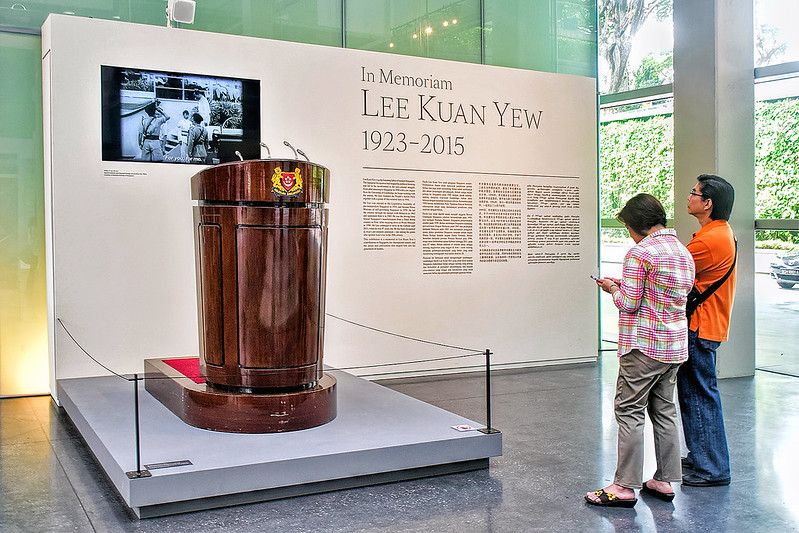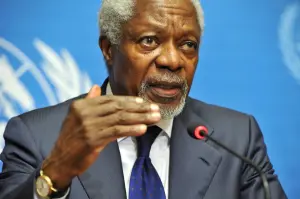Lee Kwan Yuen, Singapore’s founding father and first Prime Minster passed away on 23 March 2015 at the age of 91. His death has again reminded the world of the Singapore miracle under his lead: Lee, the British-educated Chinese Singaporean became Singapore’s first Prime Minister in 1959 after Singapore gained full self-government from the British. Six years later, Singapore was expelled by Malaysia. Lee led his people to build an economy from scratch: When he retired in 1990, his nation had become one the wealthiest and least corrupt states in Asia. Within one generation’s time, Singapore had joined the first world club.
In the days following his death, Lees accomplishments have been praised by many global leaders. US President Barak Obama described Lee as a “remarkable leader’ and “a true giant of history”; Britain’s David Cameron acclaimed him for “one of the great success stories” while Xi Jinping, China’s president called him China’s old friend. and Narendra Modi, India’s Prime Minister, said Lee was both a “far-sighted statesman” and “a lion among leaders.”
Despite the tribute, Lee Kwan Yew’s authoritarianism has also made his legacy disputable. The wealthy nation is by far still a one-party state where “political opponents are targeted and contrary views muzzled” according to the Human Rights watch.However, it is important to understand the “Singapore Model” or so called “Asian Value” in the historical context before discussing the future of this state and nation.
The Singapore Miracle
When Singapore separated from Malaysia in 1965, this Chinese-dominated, impoverished island was facing numerous challenges: The separation caused the import-substitution strategy to be aborted; its role of trading post for the region was threatened by a confrontation with Indonesia; unemployment was at 10% and expected to increase due to the withdrawal of British bases which employed around 40,000 workers.
Most Chinese people in Singapore (accounted 62% at independence and 78% in 1990) were originally from the rural areas of China’s south Guangdong and Fujian Province, most of whom or whose parents could not survive at home and thus sought a better life in Southeast Asia. The insecure feeling has been prevailed among them. Job creation and the provision of decent housing became the first priority for Lee Kwan Yew. The Housing Development Board (HDB) built more than 10,000 low- and middle-income housing units per year in early 1960s, while the Economic Development Board (EDB) sought to attract investment and new jobs.
Lee and his government launched an export-oriented strategy. Because Singaporeans lacked the skills and capital to develop enterprises of the necessary size and sophistication on their own, Lee targeted foreign investors to develop the manufacturing and financial sectors. To attract foreign firms, the government undertook measures to improve the labor climate and investment environment. Key investments were made in infrastructure, exchange rates were managed, tariffs and duties on imports and exports were set at low rates. With all these measures, world trade and investment flows began to boom and American and European manufacturing firms started to arrive. Singapore’s real GDP growth accelerated to 12.9% in 1966–1973, unemployment dropped to 3.6% in 1978, manufacturing sector’s share of GDP grew from 14% in 1965 to 24% by 1978. Singapore was recognized as a “little dragon” together with other East Asian nations (South Korea, Hong Kong, Taiwan).
In 1979, Lee’s government initiated a three-year wage correction policy to push Singapore’s factories to upgrade to higher technologies and increase efficient use of labor by restructuring. Automation, mechanization and computerization were encouraged and higher value-added and skills intensive investment promoted. The economic growth averaged 7.7% during 1979 to 1985. By the time Lee Kwan Yew left office in 1990, Singapore’s manufacturing sector kept a growth of 9.5% due to the electronic components industry. Meanwhile, it had become Asia’s third most important financial sector with an annual 15% growth in financial service, only behind Tokyo and Hong Kong. Singapore became one of the wealthiest nations per capita and has been considered to be one of the world’s best places to do business. According to the Singapore Department of Statistics, Singapore’s per- capita GDP surged more than 50-fold to S$71,318 ($51,717) from 1960 to 2014,.
Shadows over the Legacy
The Singapore Miracle was largely shaped by its founding father Lee Kwan Yew. After the retirement, Lee Kwan Yew still had an influence in the country’s politics. However, the economic miracle, discipline, efficiency, cleanliness and incorruptibility have been achieved at other costs: all media has been strictly controlled by the government under the argument that “press freedom must sometimes be subordinated to the needs of nation building and that media regulation is necessary to ensure responsible journalism and to protect the reputations of public officials and institutions.” Politically, Lee and his People’s Action Party (PAP) maintained its iron grip partly by squashing dissent, bankrupting political opponents in court or imprisoning them without trial. He created a “nanny state” that punished people for littering or not flushing the toilet, banned chewing gum and encouraged graduates to produce smart babies. Meanwhile, caning is a widely used form of legal corporal punishment in Singapore. In 2012, the number of caning sentences has still reached 2,500, despite a decline since 2007.
Dictator Idol
Lee Kwan Yew’s Singapore model, namely the rapid economic growth achievement under authoritarian governance has been considered as a perfect example by political leaders from other Asian countries. China, for example, wanted a similar model to pursue economic growth under the one party rule, as the political leaders consider the democratic India too poor, Taiwan too chaotic and the Western democratic model doesn’t “conform to China’s actual conditions”. China’s economic reform since 1978 has partly been inspired by the Singapore Model. Recently, China’s president Xi Jinping said that China’s modernization process has been undeniably shaped by the “tens of thousands of Chinese officials” who went to Singapore to study Lee’s model.
Lee’s coined term of the Asian Value even received praise from dictators of other continents. He was awarded the prestigious “Order of Honor” by his Russian admirer Vladimir Putin. In Georgia, Mikhail Saakashvili passed Lee’s books around like bibles. However, none of these leaders have been able to emulate the lack of corruption and the high efficiency of the Singaporean government. The Singapore miracle can hardly be replicated, not just because of its leadership and management style, but as well due to its geographical uniqueness and a wider set of beneficial circumstances that are not as easily replicable.
A New Crossroads for Singapore?
The Singaporean government declared one week of national mourning after its founding father Lee Kwan Yew had died. The political leaders and Singaporeans from all walks of life showed their respects. For the old generation, the memory of poverty and instability is so impressive that they consider the sacrifice of democracy and human rights for economic growth necessary for the nation. This sacrifice is in fact an important part of the “Singapore Model” spirit. For those who had struggled to survive before, human rights were a luxury then and are seen as a luxury now. They were truly emotional when they said goodbye to the founding father.
But how long should the “sacrifice” last? According to the World Competitive Yearbook for 2014 published by the International Institute for Management Development in Switzerland, Singapore ranked as the world’s third most competitive economy after the U.S. and Switzerland. But it still ranked 153 out of 180 countries in a 2015 press freedom index published by Reporters Without Borders, one spot behind Russia and nine after Myanmar. After Lee’s death, protest and criticism are not allowed. Amos Yee, a sixteen-year-old Singaporean boy who criticized the late Lee in an online video, has been charged by the government. He faces a fine and up to three years in jail if convicted. On March 29, the government announced a new regulation to tighten grips on Internet News sites, which has been considered as a new attempt to stifle Internet-based media that often are critical of Singapore’s government.
The continuous strong control is of Mr. Lee’s wish, who always expected fear from his people instead of love. But is it also what the Singaporeans expected? Looking at Singapore’s Asian neighbors, Taiwan has moved to a new era after two peaceful transitions of power through political parties; In Indonesia, when its former dictator Suharto died in 2008, people were free to mourn or celebrate. Singapore, one of the world’s wealthiest nations, lags behind its neighbors in other aspects.
The rapid development of social media is believed to provide more information and possibly lead changes in the country, especially among the young generation, who also desire freedom and happiness through other means than wealth. In 2011’s general election, although the ruling party PAP still won the great majority of seats, its share of the popular vote slipped to around 60%, the lowest since Singapore’s independence. Prime Minister Lee Hsien Loong (Lee Kwan Yew’s son), admitted that many Singaporeans wish for the government to adopt a different style and approach, and desire to “see more opposition voices in parliament to check the PAP government.” The PAP might keep its ruling position in next year’s general election, but more opposition voices will tell more authentic stories of today’s Singapore. It is time for Singapore and its government to think about its future in a time without Lee Kwan Yew.
Author Biography
Chen Yu studied financial management and worked as an accountant and journalist in China. She is now pursuing her Masters degree in Willy Brandt School of Public Policy. Her research interests are EU-China relations and economic development in Asian countries.











